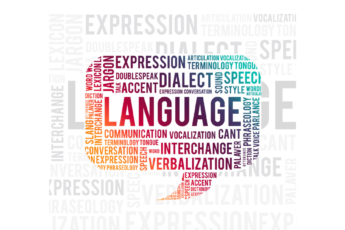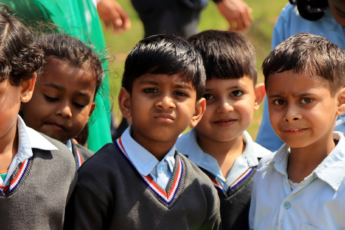Breaking the Mold: Empowering Students to Think Outside the Box
In our always-evolving world, thinking outside the box is more important than ever! Being able to tackle problems with fresh perspectives and inventive ideas is a valuable skill in any field. When we break free from traditional boundaries, we can make a real impact and flourish in a constantly changing environment. To help students succeed in the future, we need to empower them to break the mold and think creatively. Creating an educational environment that encourages curiosity, exploration, and imaginative problem-solving will give students the skills and mindset they need to navigate the future of work. Student thinking is a quality that needs practice to crucially develop problem-solving skills and creativity.
💡Challenges of Traditional Education
Traditional education systems are essential for teaching basics, but they don’t always nurture creative thinking. Instead, they often focus on memorization and conformity over critical thinking and problem-solving. Conformity can hold back creativity and innovation by imposing strict rules and norms that limit individuality and discourage originality. This leaves little room for students to explore their interests and ideas, turning them into passive learners instead of active thinkers. This hampers their ability to develop independent thoughts and creative problem-solving skills.
Additionally, societal and cultural norms often favor conformity and discourage deviation from established criteria. To overcome this, promoting awareness, open dialogue, and creating a safe space for diverse perspectives is essential. Creativity blossoms when children are encouraged to challenge norms and try unconventional approaches. Educators must challenge biases, celebrate uniqueness, and educate stakeholders on the value of unconventional ideas. Empowering teachers to empower students creates a supportive learning environment.
💡NEP 2020: Fostering Creativity & Critical Thinking
The National Education Policy (NEP) 2020 focuses on promoting creativity and critical thinking among 21st-century learners. Emphasizing conceptual clarity over rote memorization, the policy aims to develop ethical values and 21st-century skills, such as critical thinking, problem-solving, and digital literacy. Replacing summative assessments with formative assessments, the NEP encourages competency-based assessments to foster higher-order skills.
The policy’s primary goal is to shift India’s education system towards a better understanding, teaching children “how to learn” and moving away from traditional rote learning practices. The policy aims to transform India sustainably into an equitable society of creative and innovative citizens with future-proof skills.
On April 21st, World Creativity and Innovation Day, the Telangana State Innovation Cell (TSIC) hosted “T-Innovation Mahotsavam” to encourage problem-solving among children. Supported by the Panchayat Raj Department, they held an “Hour of Innovation” webinar introducing design thinking to students. TSIC teams visited villages, organized innovation hours, and encouraged locals to identify problems and brainstorm solutions. In collaboration with Wi-Hub and Inqui-Lab Foundation, a webinar highlighted creativity and innovation significance in everyday life, promoting inclusivity in innovation. This initiative will lead to student thinking that fosters autonomy, motivation, and self-directed learning in students.
💡Strategies to Promote Out-of-the-Box Thinking:
- Encourage curiosity: Children are naturally curious, and fostering this trait can help them to think outside the box. Encourage them to ask questions, explore, and investigate the world around them.
- Provide open-ended activities: Offer activities that don’t have a single ‘right’ answer, such as art projects or brainstorming sessions. This allows children to explore different possibilities and encourages them to think creatively. Besides, a positive mindset for students fosters resilience and self-confidence.
- Teach problem-solving skills: Teach children how to identify problems, brainstorm solutions, and evaluate the effectiveness of their solutions. This fosters critical thinking and encourages them to look beyond conventional solutions.
- Promote independent thinking: Encourage children to form their own opinions and ideas, even if they differ from the norm. This helps them to develop their own unique perspectives and think creatively. Understanding the types of mindsets allows individuals to adapt and grow effectively.
- Support risk-taking: Encourage children to take calculated risks and learn from their mistakes. This helps them to develop resilience and willingness to try new things.
- Provide opportunities for hands-on learning: Give children a chance to learn by doing hands-on projects or experiments. This helps them understand how things work and encourages them to think creatively to solve problems.
- Emphasize the process, not just the outcome: Encourage children to focus on the problem-solving approach rather than just the end result. This helps them develop their creativity and critical thinking skills. Student empowerment builds a sense of ownership and responsibility in the learning process.
The Final Word
Today’s students are tomorrow’s innovators and problem-solvers, and society needs all the ingenuity it can get. But there is a concern that future generations will fall short when confronted with the significant challenges ahead. A disproportionate number of highly educated workers are nearing retirement age, and many younger people lack the skills to fill their roles. Meanwhile, technological advances are creating entirely new industries—from robotics to nanotechnology—that require people with a higher skill set. So we need more than just technical know-how; we need a workforce that can create innovative solutions to these problems by thinking outside the box.
One potential solution: education reform that encourages students to think independently and creatively. By challenging traditional educational boundaries and nurturing creativity, we can equip students with the skills to tackle real-world problems and drive progress. Educators, parents, and communities must collaborate to create environments that encourage exploration, curiosity, and unconventional thinking.
At Square Panda India, our team of experts creates an adaptive, self-paced curriculum that engages children throughout their learning journey. Our programs are tailored to deliver improved learning outcomes and provide a more holistic educational experience. To learn more, visit our website – www.squarepanda.in




Leave a Comment